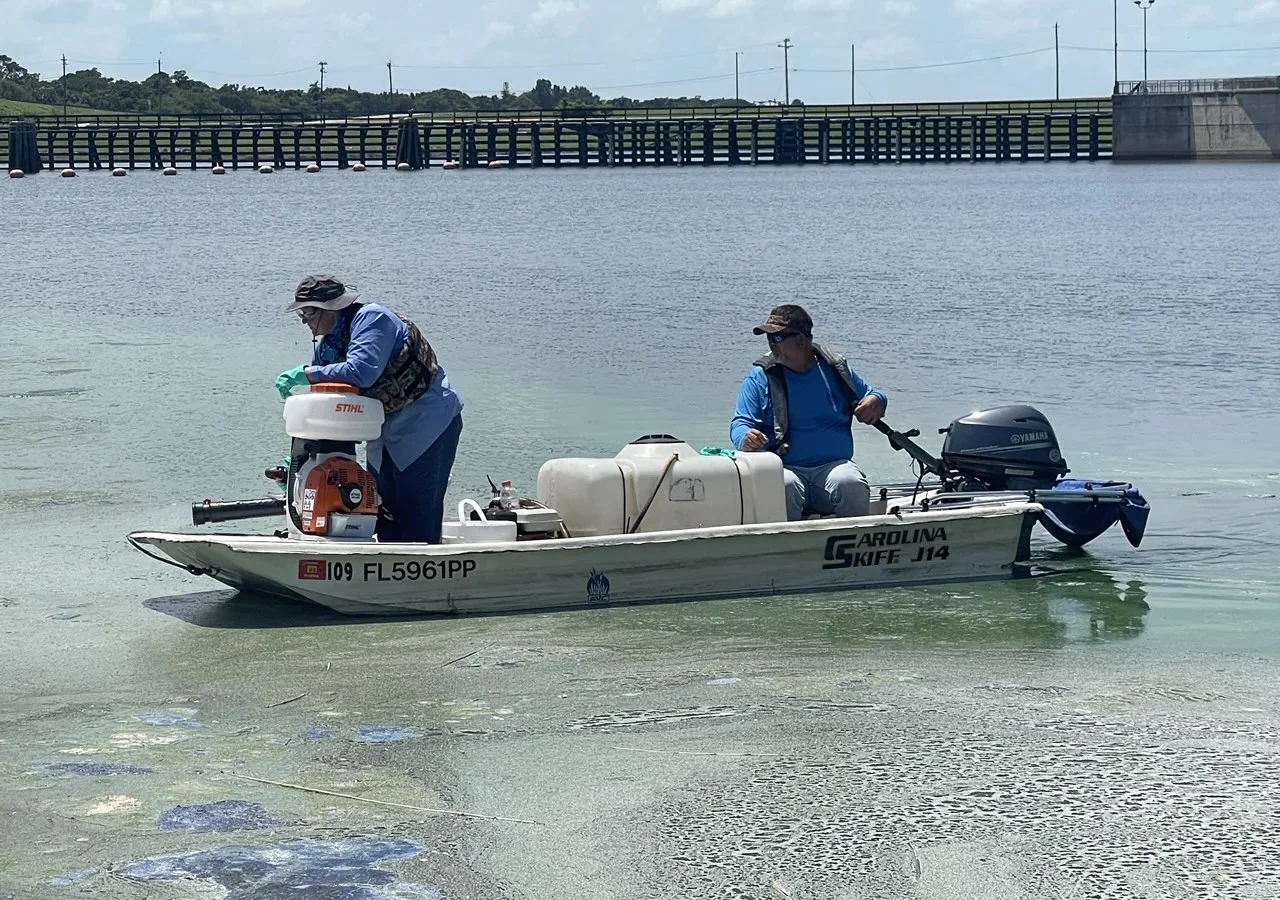Aquatic Vegetation Control Has Joined Battle Against Blue-Green Algae
By Sharon Gillenwalters,
President/CFO,
Aquatic Vegetation Control, Inc.
Florida’s water bodies are part of our stunning landscape and should be filled with vibrant aquatic life. However, our unique environmental conditions, including warm water and nutrient-rich runoff, have led to the rise of harmful algae blooms (HABs) and blue-green algae all over the news. These blooms are not only unsightly, but they can also pose significant risks to the ecosystem and human health.
Understanding Toxic Algae
Harmful Toxic Algae, or HABs, are a phenomenon caused by the rapid proliferation of certain types of algae, particularly cyanobacteria, in the water. Warm, slow-moving waters and excessive nutrient concentrations create the perfect conditions for these blooms to thrive. While some algae blooms are natural events in healthy ecosystems, the proliferation of toxic algae can disrupt the balance of aquatic environments, negatively impacting native plant and animal species. HABs can also produce toxins that are harmful to human life. When these toxins are in the water, they can have a range of adverse effects, including:
- Ecosystem Disruption: Toxic algae blooms can deplete oxygen levels in water bodies, leading to fish kills and other aquatic life disruptions.
- Foul Odors: The decomposition of algae can create foul odors in the surrounding areas, affecting the quality of life for residents and visitors.
- Human Health Risks: Some species of blue-green algae toxins can cause skin irritation, respiratory issues, and other health problems in humans. Ingesting or coming into contact with contaminated water can be hazardous.
AVC’s Contributes to the Fight to Irradicate HABs
Aquatic Vegetation Control has one important mission: To be the industry leader in providing environmental services to protect natural resources and communities. Our services include:
- Aquatic Vegetation Control
- Holistic Lake Management
- Upland and Wetland Invasive Vegetation Control
- Ecosystem Restoration and Mitigation
- Ecological Resource Assessment
- Nuisance Terrestrial Vegetation Control
- Surface Water and Groundwater Quality Studies
AVC has taken on the challenge and joined the fight to combat toxic algae blooms. We have begun utilizing an innovative peroxide-based treatment method. While this method is harmful and effective in irradicating HABs, it is safe for aquatic life. We have utilized this method to combat blooms in Lake Okeechobee at the Port Mayaca lock with great success.
Preventive Strategies
While we are grateful to provide this reactive method for algae management, preventive measures play a crucial role in curbing the occurrence and severity of toxic algae outbreaks. Here are some key strategies:
- Nutrient Control: Managing excess nutrients, especially phosphorus and nitrogen, is essential. This involves controlling agricultural runoff, regulating fertilizer usage, and enhancing wastewater treatment facilities to remove nutrients efficiently.
- Buffer Zones and Vegetative Barriers: Creating vegetative buffers along water bodies helps filter out pollutants and reduces nutrient runoff. Planting native vegetation along shorelines stabilizes them and prevents sediment and nutrients from entering the water.
- Stormwater Management: Proper stormwater management prevents contaminants, including nutrients, from entering water bodies during heavy rainfall, reducing the risk of promoting algae growth.
- Limiting Direct Discharges: Ensuring that wastewater undergoes adequate treatment before discharge is critical. Discharging untreated industrial or municipal effluents into water bodies can introduce excessive nutrients and pollutants.
- Monitoring and Early Detection: Regularly monitoring water quality and algae levels, which is one of AVC’s services, allows for the early detection of blooms. Swift action can then be taken to eradicate them and implement preventative measures whenever possible.
Joining the Battle: Resources and Contacts
For those interested in learning more about combating blue-green algae and HABs, the Florida Blue-Green Algae Task Force provides valuable information and resources. If you come across blue-green algae blooms, reporting them to the Florida Department of Environmental Protection can aid in swift response and management.
- Florida Blue-Green Algae Task Force: Blue-Green Algae Task Force
- Report Blue-Green Algae Blooms: Algal Bloom Contacts
- DEP FAQ on Freshwater Algal Blooms: Freshwater Algal Blooms FAQ












